Olives have been an essential component of human cuisine and agriculture for millennia.
Different types of olives have distinct tastes and nutritional value and come in wide varieties, from small green olives to large black ones.
They are full of healthy fats, antioxidants, and vitamins. Olives play an integral role in Mediterranean diets worldwide and remain popular today.
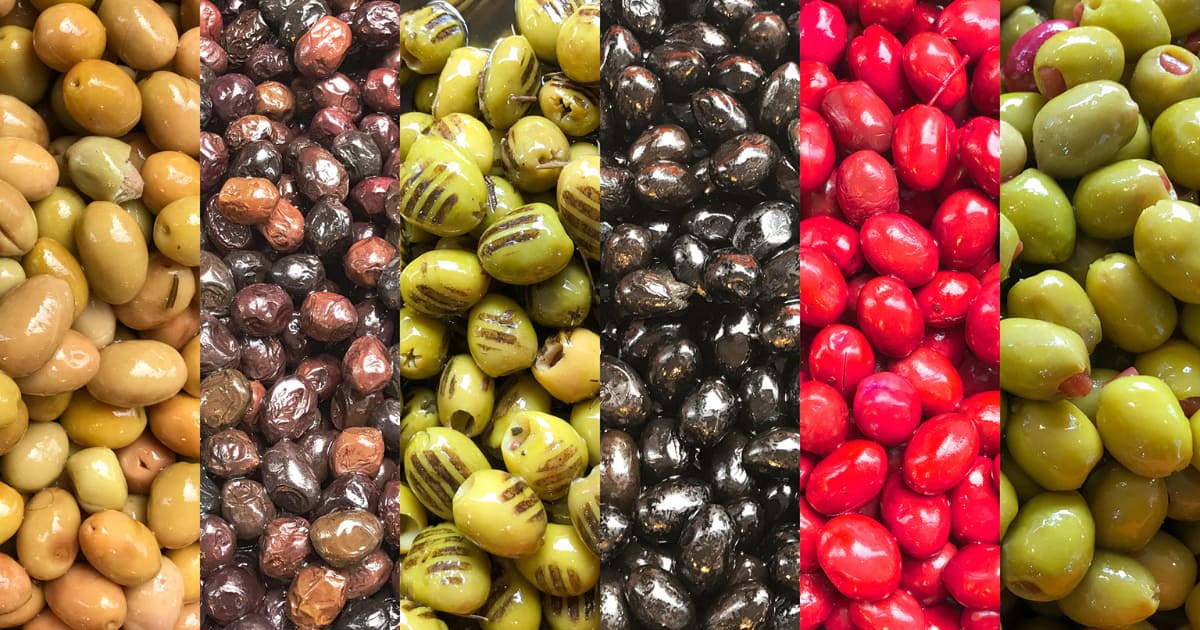
The History of Olives
Cultivation dates back thousands of years in the Mediterranean region. Evidence suggests they first domesticated around 6,000 years ago.
They spread worldwide and were integral to ancient cultures like Greece, Rome, and Egypt.
These cultures revered olives and the oil extracted from them for religious ceremonies, medicinal uses, and culinary applications.

Importance of Olives in Culinary and Cultural Traditions
They have been associated with culinary and cultural traditions, particularly in Mediterranean countries, where they hold a unique position in regional gastronomy.
Olive oil, derived from pressing the fruit, is valued for its health benefits and unique flavor. They are enjoyed as appetizers, added to salads, or used as an ingredient in various dishes.
Their cultural significance extends beyond dinner tables. Historically, olives have been used in religious rituals to symbolize peace, wisdom, and victory.
Olive Cultivation and Harvesting
Olive tree cultivation and harvesting are age-old processes requiring meticulous care and patience.
Olive trees thrive in Mediterranean climates with well-drained soil and ample sunlight, which are essential for their growth and fruit production.
The tree's lifecycle consists of four key stages:
- Flowering
- Fruit set
- Maturation
- Harvesting
These phases occur over several months leading up to harvest season, which runs from October to January.
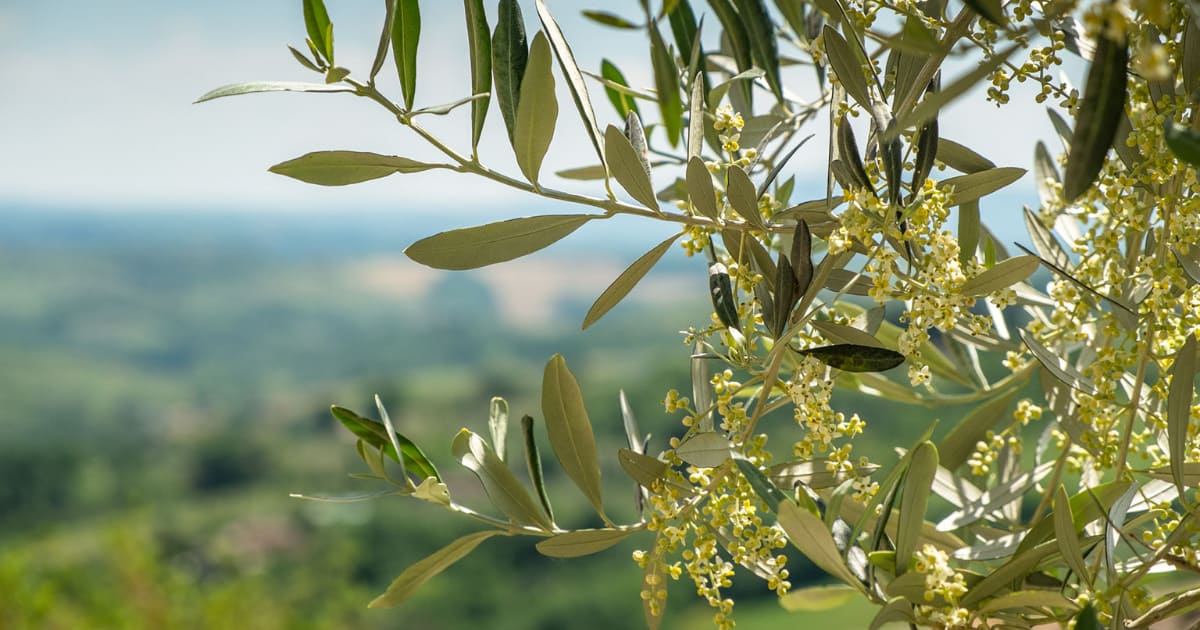
The Olive Tree and Its Growth Cycle
The olive tree (Olea europaea) is renowned for its hardiness and longevity.
Its growth cycle begins in the spring with delicate white flowers, eventually giving way to tiny fruits called olives.
As these mature over the summer, their color changes from green to darker hues as they ripen - heralding the start of harvest season!
Traditional vs. Modern Harvesting Methods
Olive harvesting methods have undergone significant transformations throughout history. Traditional practices have been replaced by contemporary approaches in various regions to enhance efficiency and productivity.
Previously, olives were mostly hand-picked or knocked down using long sticks. It is an intensive and laborious process requiring skill and precision.
Modern techniques employ advanced technologies like mechanical and trunk shakers, allowing faster and more efficient picking.
Despite the widespread adoption of modern methods, some olive growers still prefer traditional hand-picking, believing it preserves fruit quality and integrity.
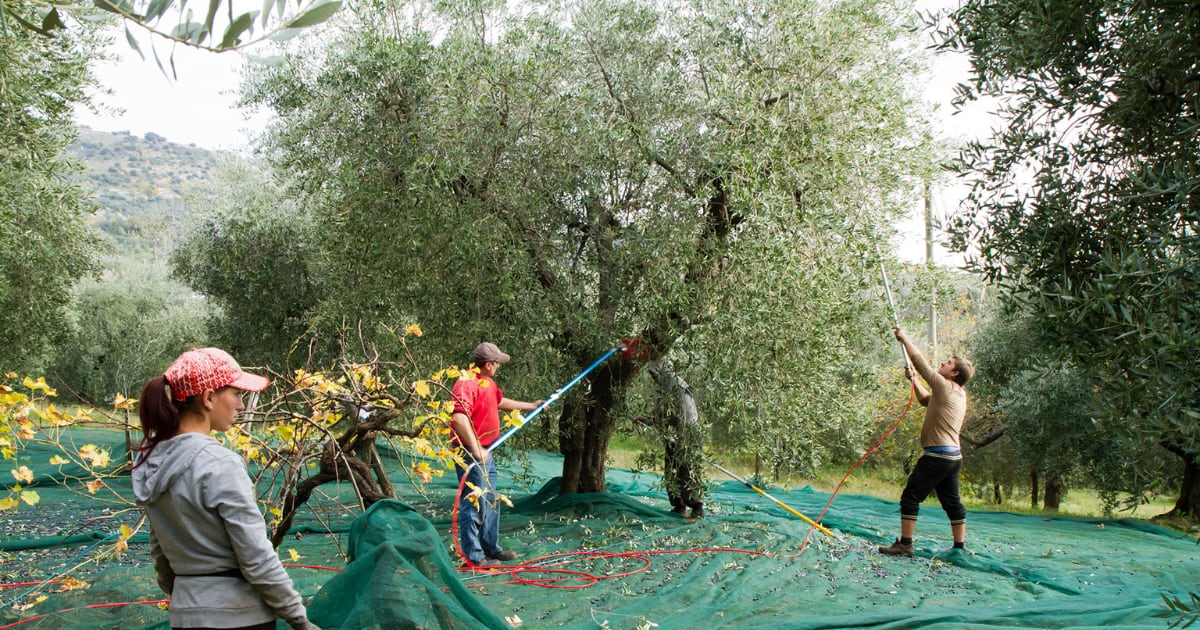
Classification and Characteristics of Olives
Olives, the Olea europaea species, are a widely-cultivated and versatile fruit native to the Mediterranean region.
Table olives are used primarily for consumption, while oil olives are mainly used for oil production.
They can also be classified according to their cultivation, processing, or preservation techniques.
Critical characteristics of olives, such as color, ripeness, size, shape, and flavor profiles, all vary depending on the variety and region of cultivation.
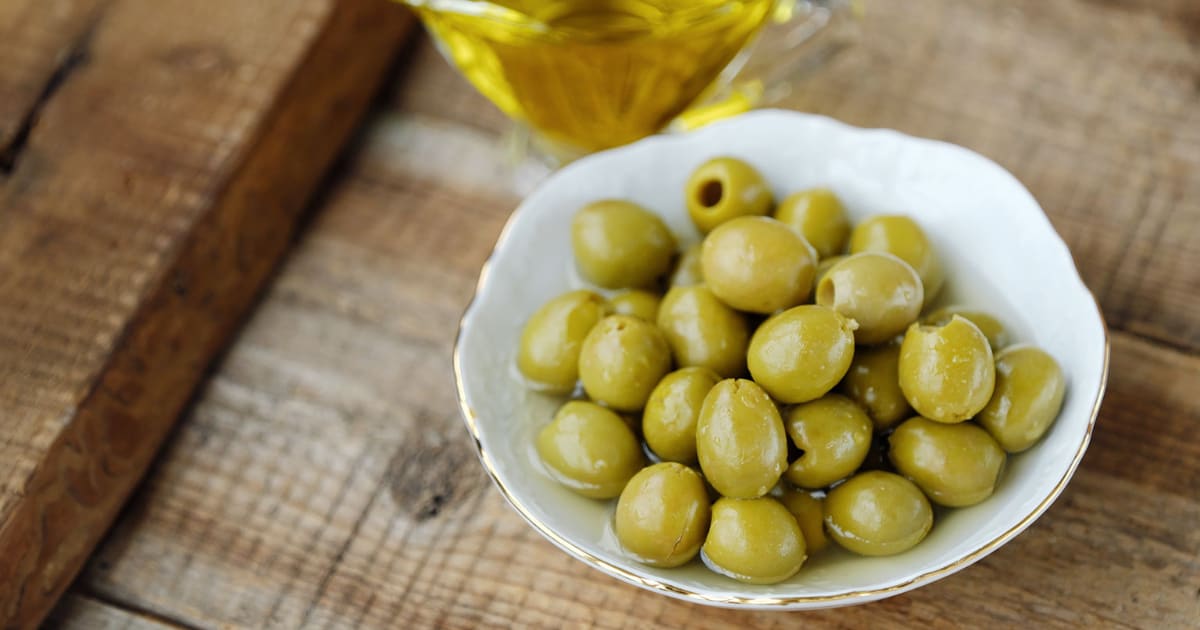
Color and Ripeness
Olives' color indicates their level of ripeness and maturity. For example, green olives are harvested when unripe, while black ones are harvested once fully mature.
Some varieties, like Manzanilla or Kalamata, turn black when fully mature, while others, like Picholine or Lucques, remain green even at this stage.
Flavor and texture change with ripeness. Unripe olives are firmer and bitter, while ripe ones are softer and fruitier in taste and texture.
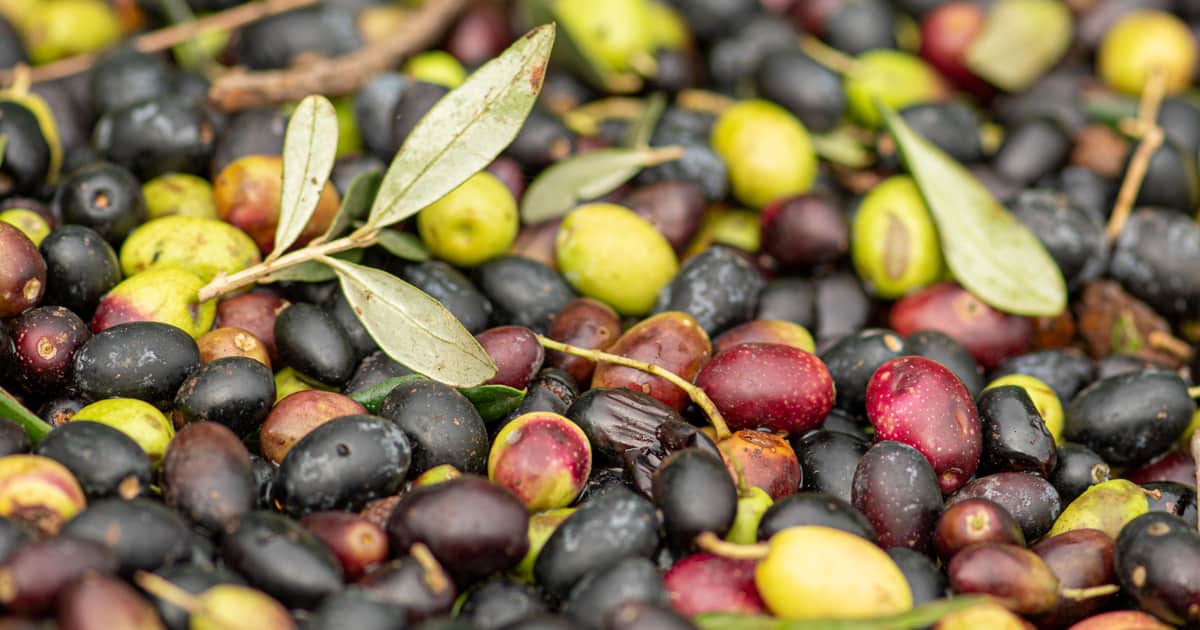
Size and Shape
Depending on the cultivar and growing conditions, olives come in various sizes and shapes.
Some popular varieties are small, like Arbequina, which primarily produces olive oil. Other popular types, such as Gordal or Cerignola, are larger and often used as table olives.
Their shapes can range from round to oval, oblong, or almond-shaped. Each offers a unique aesthetic and culinary appeal.
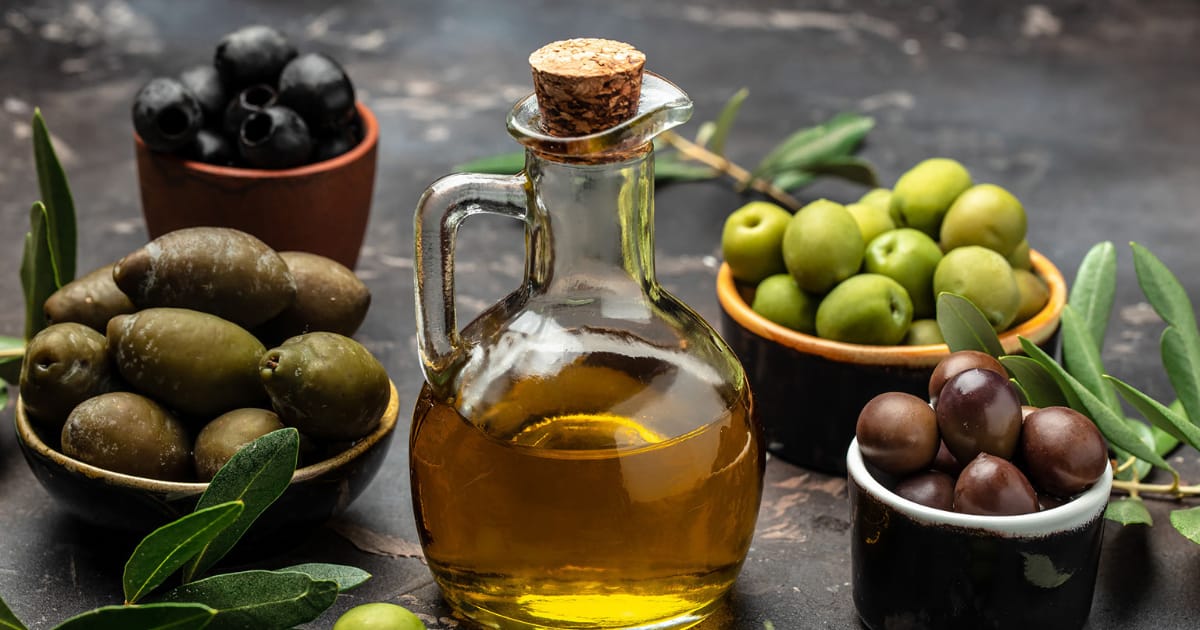
Flavor Profiles
Olive flavor profiles vary based on variety, ripeness, and processing method.
Green olives tend to be bitterer and pungent, while black olives taste sweeter and fruity.
Curing, fermenting, or bringing all play an essential role in determining the final taste.
For instance, salt-brined olives have a salty tanginess, while those cured in lye have a milder flavor with a hint of bitterness.
Some olives may also be marinaded or seasoned with herbs, spices, or other ingredients to diversify their profiles further.
Types Of olives
Explore the world of olives and discover their varieties, each with distinct flavor, color, and texture.
From brine-cured Kalamata and Manzanilla olives to dry-cured Greek black olives and water-cured Castelvetrano olives.
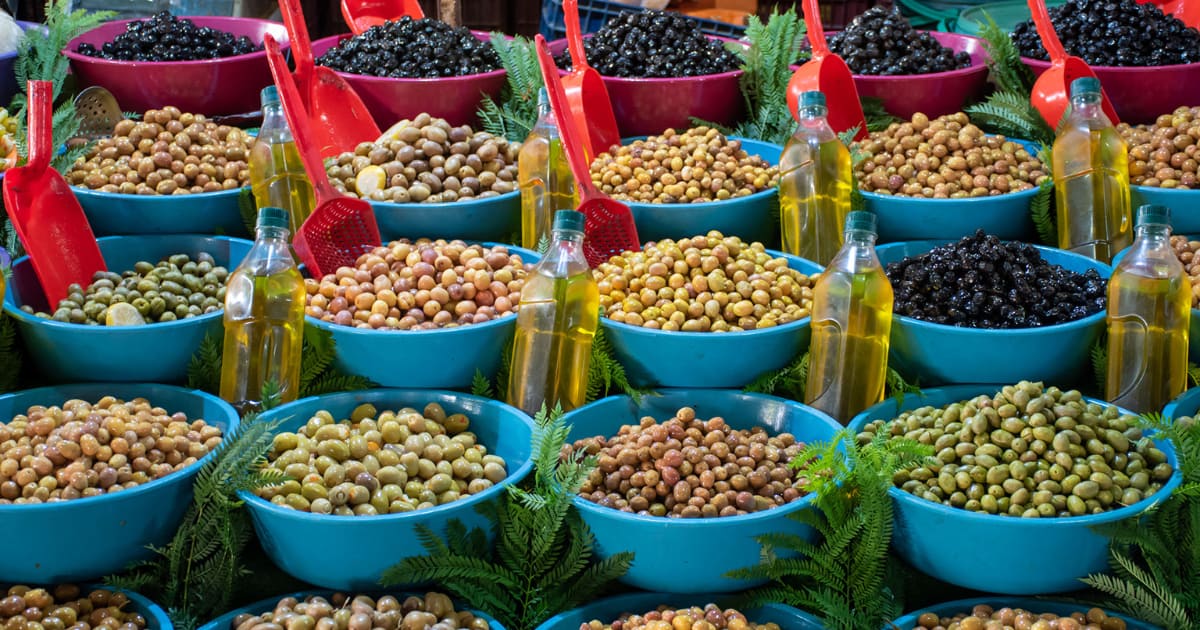
1. Green Olives
Green olives are a beloved and versatile ingredient in many cuisines. They are prized for their distinctive flavor and vibrant color.
Harvested before full maturity, these olives have a firmer texture and a bitter, pungent taste.
Popular varieties of green olives include:
- Castelvetrano
- Picholine
- Cerignola
Each type has its own distinct origin story and culinary uses.
Castelvetrano
Castelvetrano olives are native to Castelvetrano in the Trapani province of Sicily, Italy. They are also known as Nocellara del Belice for their cultivation region in the Belice Valley.
The cultivation of these olives dates back centuries. Some say even to ancient Greek and Roman times! Their exceptional flavor has earned them PDO (Protected Designation of Origin) status throughout Europe.
Flavor and Culinary Uses
Castelvetrano olives are renowned for their vibrant green color, mild flavor, and buttery texture. In addition, they have a subtle sweetness with enough almond flavoring.
They become favorites among olive connoisseurs. Castelvetrano olives make excellent snacking items due to not being salty or bitter.
They pair with cheeses, charcuterie items, salads, pasta dishes - even martinis! So you can use them as garnish in martinis!
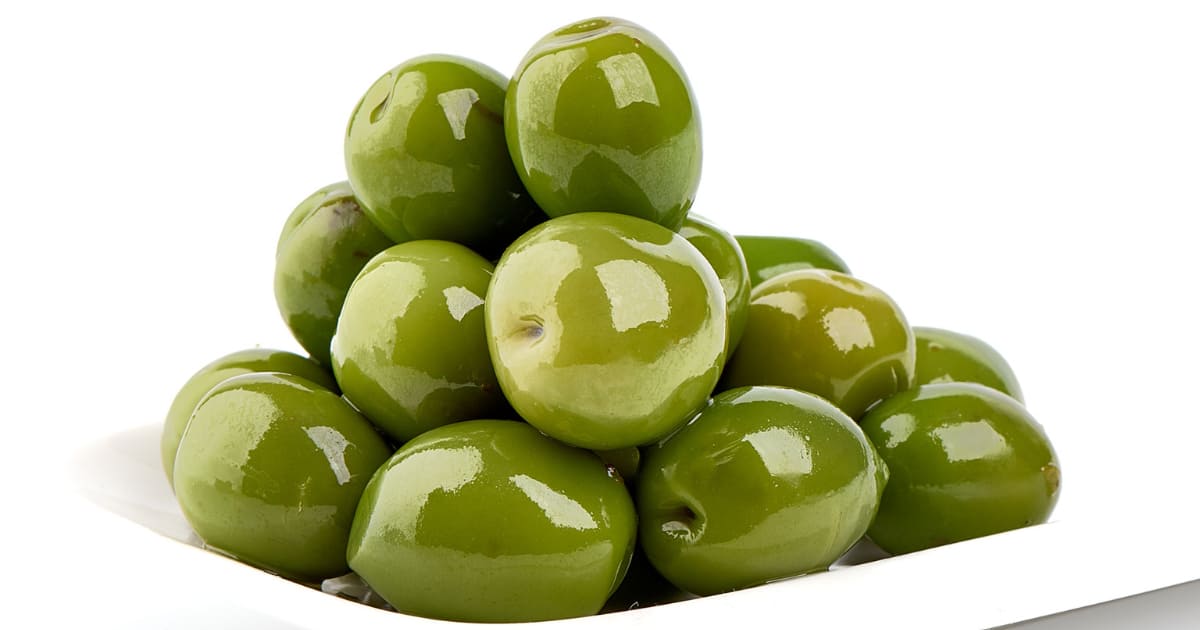
Picholine
Picholine olives come from the Gard region in southern France, where they have been cultivated since the 18th century.
Picholine olives were first cultivated for their oil, but they became popular as table olives in the 19th century. They have been a common ingredient in French cuisine ever since.
Flavor and Culinary Uses
Picholine olives have an elongated shape with a firm and crunchy texture. Their flavor profile features a subtle balance of saltiness, bitterness, and mild nuttiness.
Typically brine-cured for added tanginess and tartness. Picholine olives make great accompaniments to cheese boards, salads, or tapenade recipes. They're sure to please any Mediterranean palate!
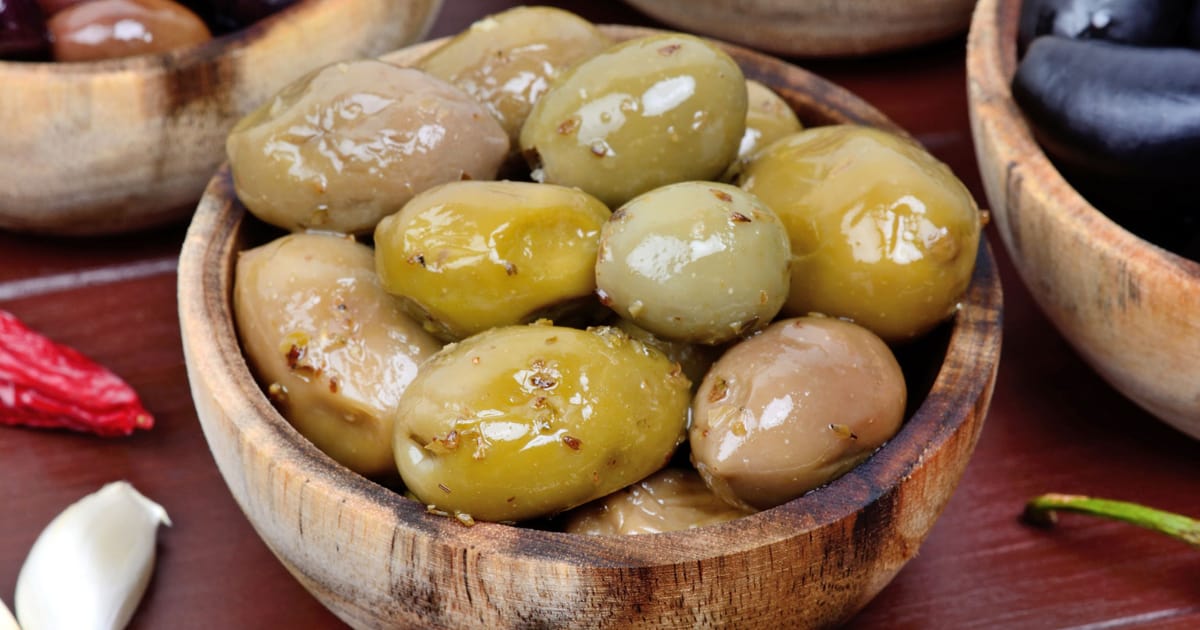
Cerignola
Cerignola olives come from Puglia, Cerignola in southern Italy. They're also referred to as Bella di Cerignola or Bella olives.
One of Italy's largest varieties, these olives have been cultivated since the early 15th century. As a result, they have earned PDO status within Italy.
Flavor and Culinary Uses
Cerignola olives are known for their large size, firm texture, and mild, fruity flavor. Compared to other olives, they contain less salt, making them ideal for those who prefer less briny tastes.
Their shape also makes them great for stuffing with garlic cheese or almonds. Perfect for antipasti platters and salads, or enjoy them on their own!
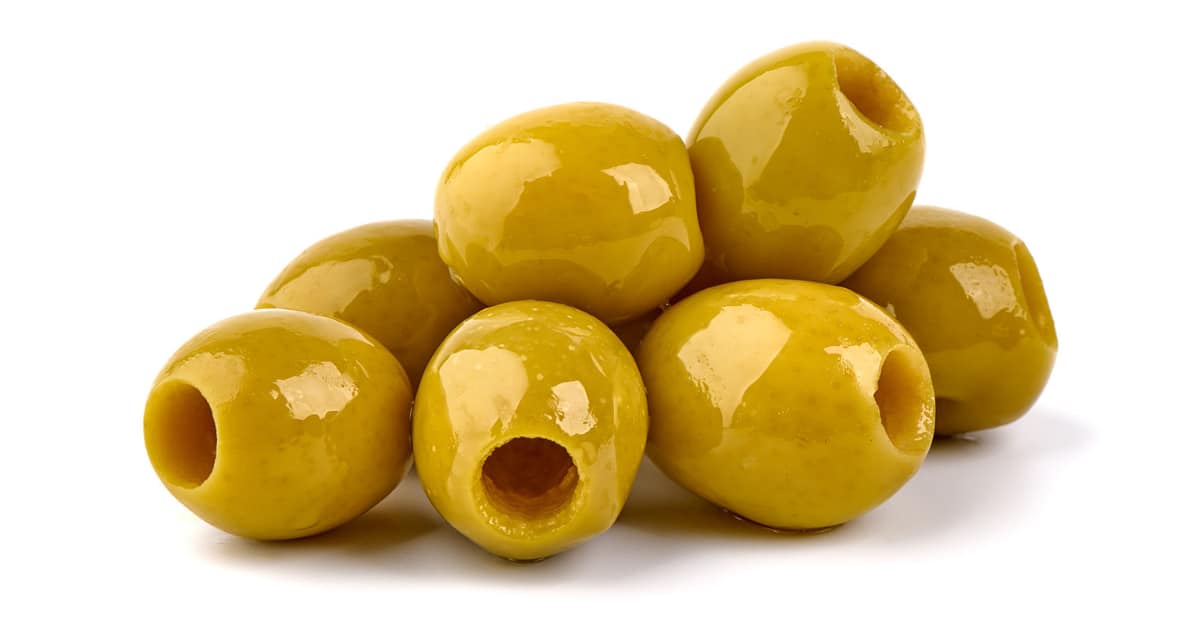
2. Black Olives
Black olives are an irresistible and versatile ingredient. They are known for their robust flavor and delicate texture.
Harvested when fully ripe, black olives boast a deeper taste and a more tender texture than green olives.
Popular varieties of black olives include:
- Kalamata
- Gaeta
- Nicoise
Each has its own distinct origin story as well as culinary uses.
Kalamata
Kalamata olives are named for the city of Kalamata in southern Greece's Peloponnese region.
Cultivated there for centuries, these olives are an integral part of Greek cuisine today. Therefore, they are protected by PDO status (Protected Designation of Origin).
Only those grown within the designated area can be labeled as Kalamata.
Flavor and Culinary Uses
Kalamata olives are renowned for their dark purple color, almond shape, and fruity taste. They're cured in red wine vinegar brine to impart a tart yet smoky flavor.
Their meaty texture and robust taste make them famous for salads, pasta dishes, and tapenades. They can be used as part of a mezze platter or as an accent in Mediterranean-inspired cocktails.
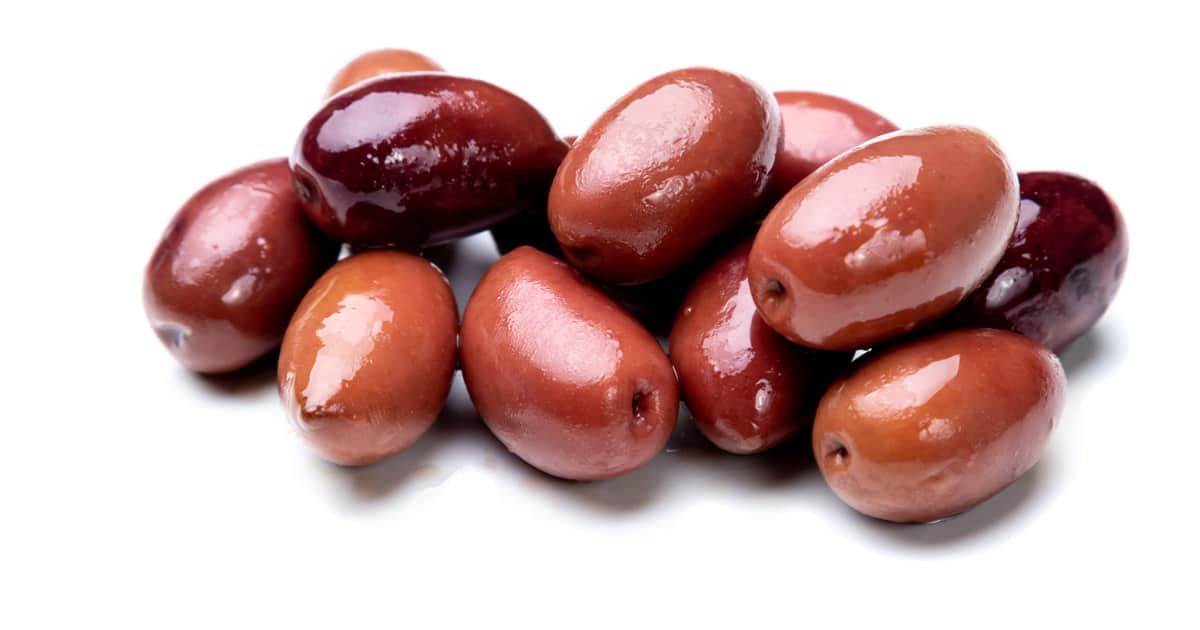
Gaeta
Gaeta olives come from the town of Gaeta in the Lazio region of central Italy and have been cultivated there since ancient Roman times.
Referred to as "Italian black olives," they are valued for their distinct taste and texture.
Flavor and Culinary Uses
Gaeta olives have a small, wrinkled appearance and are renowned for their soft, tender texture. Traditionally cured in salt brine, these olives taste both salty and sweet.
Gaeta olives make great snacks or additions to antipasti platters, pizza, and focaccia toppings. They also go great with pasta dishes, salads, or Italian-style sandwiches.
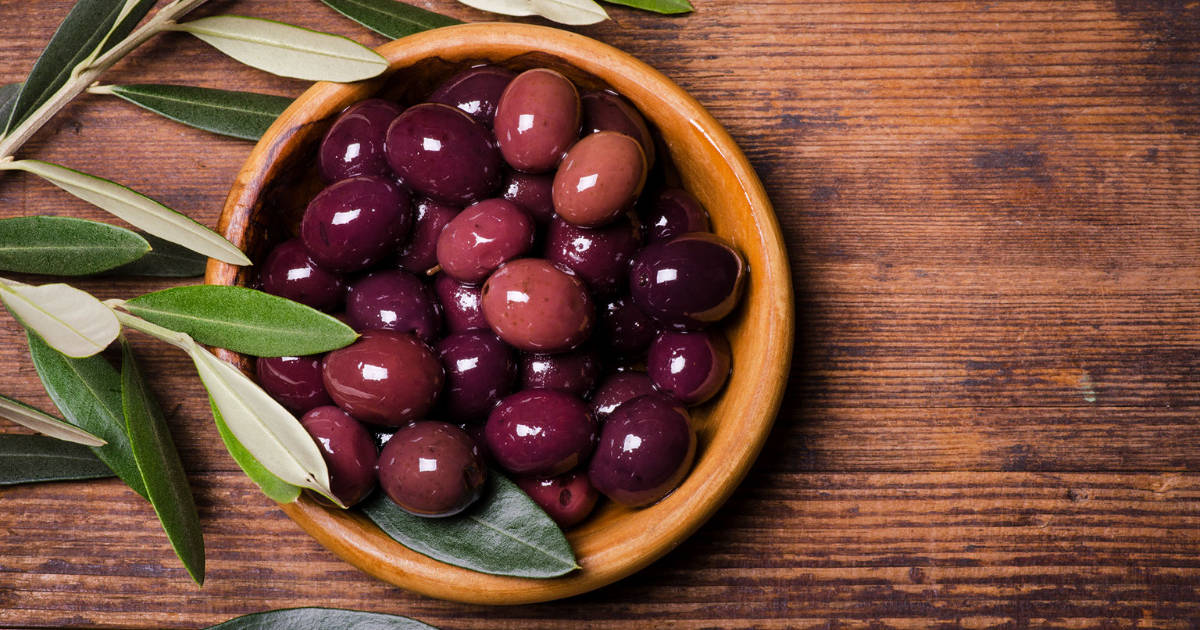
Nicoise Olives
Nicoise olives hail from the French Riviera, specifically around Nice. Cultivated here for centuries, they play a significant role in local cuisine.
Nicoise olives are small black olives commonly called "Cailletier" after the type of tree they grow on.
Flavor and Culinary Uses
Nicoise olives are distinguished by their small size, firm texture, and robust flavor. They're typically brine-cured for a salty yet slightly bitter finish. Famous in French dishes like Salade Nicoise.
Add them to tapenades, pasta dishes, sandwiches, and salads! Their firm texture also makes them great additions to cheese or charcuterie boards!
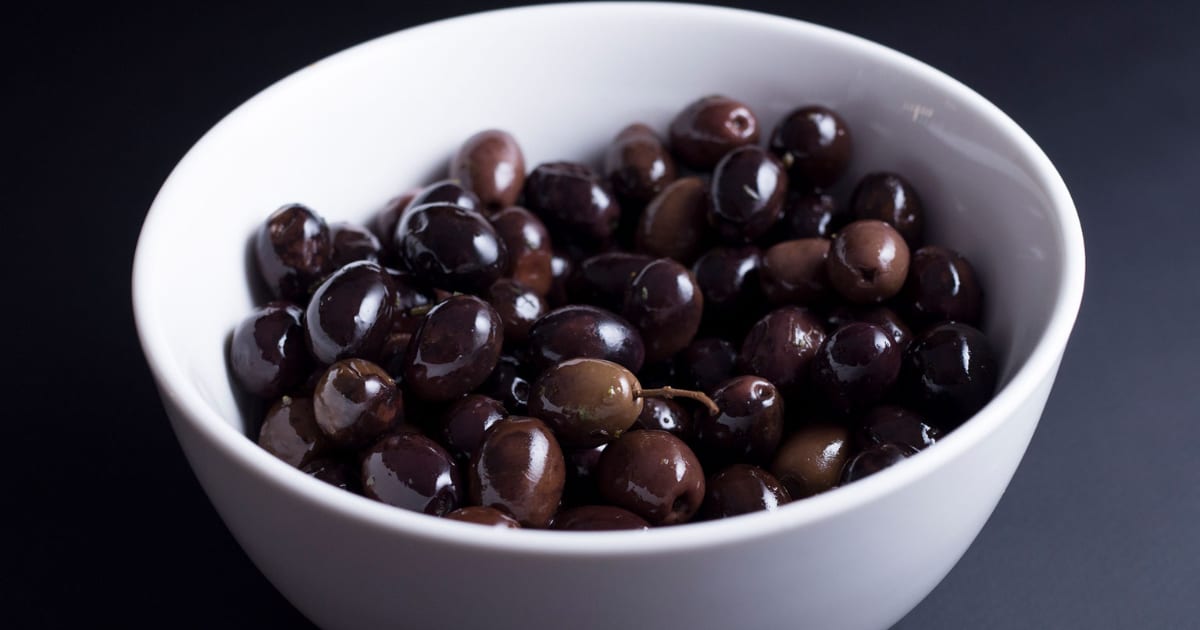
3. Mixed-Color Olives
Mixed-color olives offer a delightful array of flavors and colors. This makes them an appealing ingredient in various dishes.
They are harvested at various stages of ripeness to provide distinct textures and tastes.
Popular varieties include:
- Beldi
- Manzanilla
- Hojiblanca
Beldi
Beldi olives have been cultivated for centuries in Morocco, and their history can be traced back to ancient Berber tribes.
These small olives with an oval shape are harvested at various ripeness stages resulting in green, purple, and black olives.
Flavor and Culinary Uses
Beldi olives have a unique, smoky taste with just enough bitterness.
They're typically cured in salt brine, giving them a distinctive tanginess and slightly salty taste.
You can find Beldi olives used in Moroccan dishes like tagines, salads, couscous, snacks, or mezze platters.
Their robust flavor pairs well with rich meats, grilled vegetables, and strong cheeses.
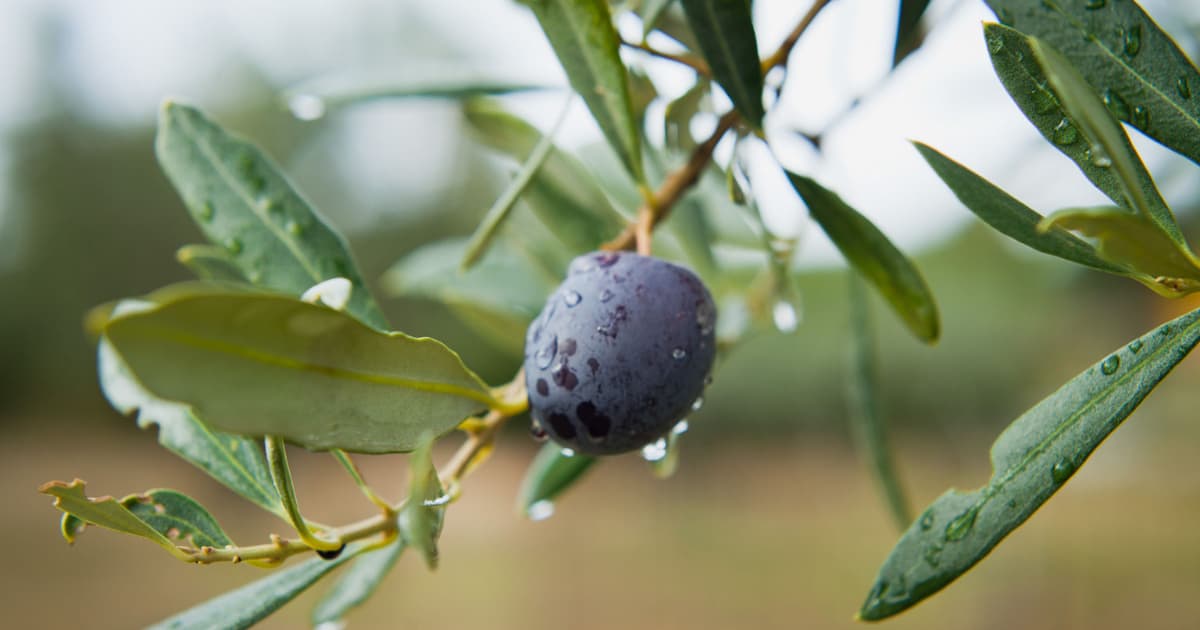
Manzanilla
Manzanilla olives come from Andalusian Spain and have been cultivated there since Phoenicians times.
Their name, "little apple," refers to their round, apple-like shape.
Manzanilla olives are harvested at different stages of ripeness, creating an array of green and black olives in different shades.
Flavor and Culinary Uses
Manzanilla olives are beloved for their tender texture and mild, nutty flavor. Usually brine-cured, these olives add an enjoyable saltiness and tang to the palate.
Manzanilla olives can be enjoyed in many dishes: salads, tapas, paella, and stuffed with pimientos garlic cheese. They can also be enjoyed with a glass of wine as a snack!
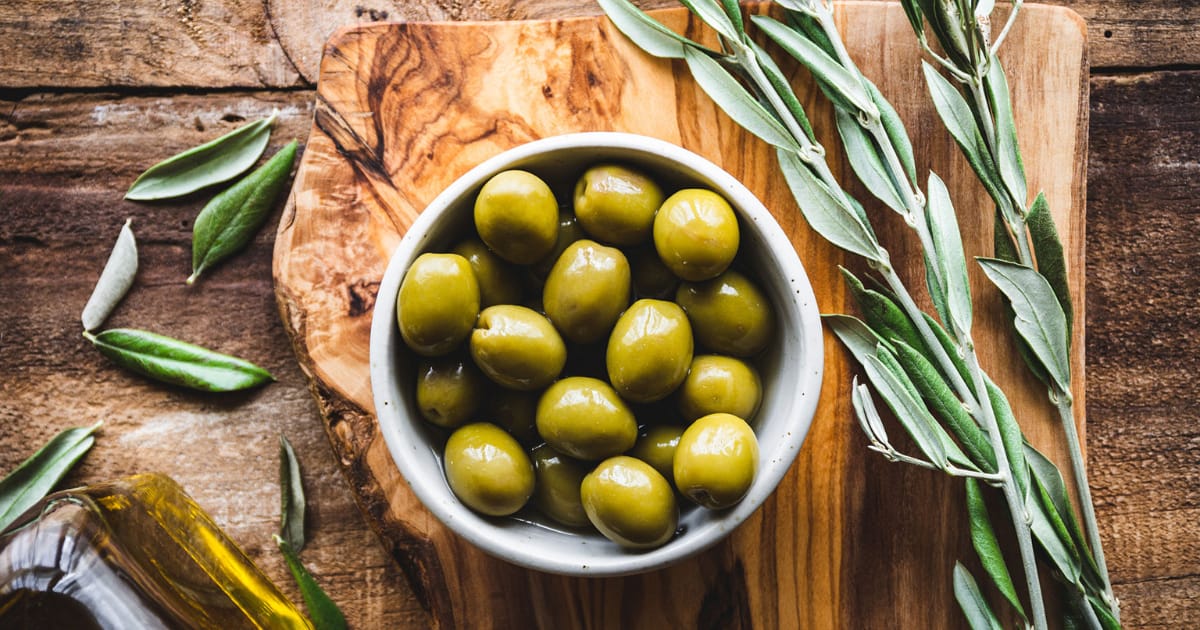
Hojiblanca
Hojiblanca olives are indigenous to Andalusian Spain, specifically Cordoba, Malaga, and Sevilla.
The name Hojiblanca - "white leaf" in Spanish - refers to their silvery underside on olive tree leaves at different stages of ripeness.
Hojiblanca olives come in various hues, from green to purple to black.
Harvested at various ripeness levels, Hojiblanca olives come in multiple stages of green, purple, and black varieties.
Flavor and Culinary Uses
Hojiblanca olives have a firm texture and complex flavor profile that combines fruitiness, bitterness, and a hint of heat.
They're cured using lye-salt brine, which imparts a subtle tanginess to the taste.
Hojiblanca olives make great tapas, antipasti platters, salads. They are also used in traditional Spanish dishes like gazpacho or albondigas.
Their robust taste makes them an ideal accompaniment to cured meats, aged cheeses, and bold wines.
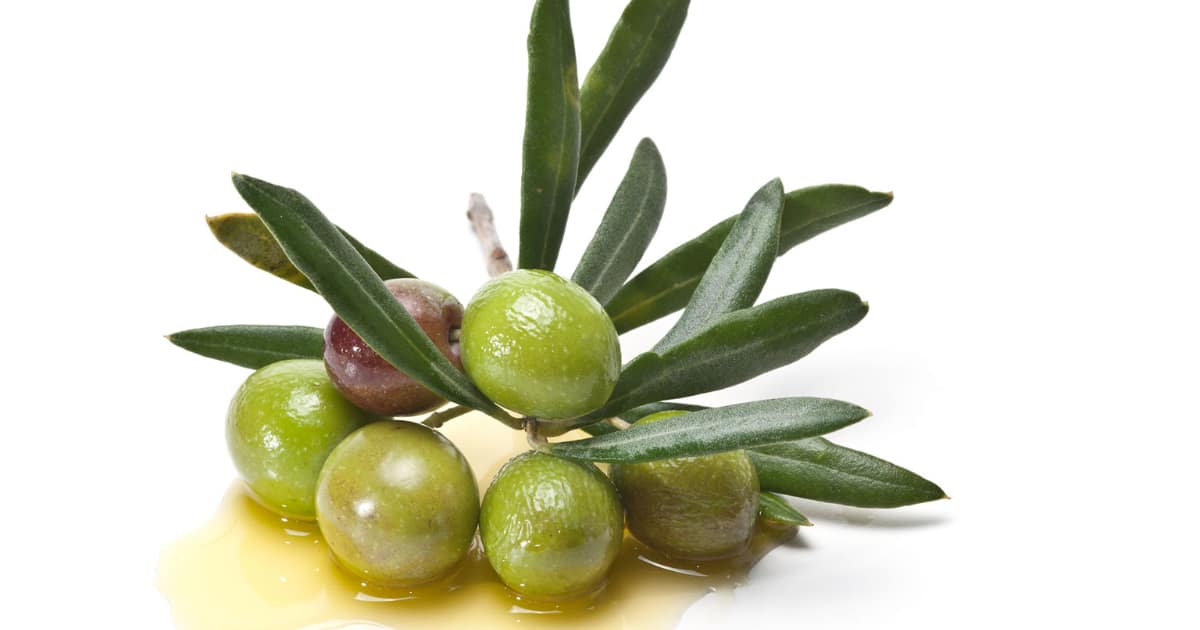
curing and processing olives
Olives are often processed or cured to eliminate their bitterness and enhance flavor.
Curing methods such as brine-curing, dry-curing, and lye-curing all have different results regarding texture and taste characteristics.
Cured Olives
Cured olives are a culinary treasure enjoyed by cultures around the world.
Curing helps preserve them and develops their distinct flavors and textures.
There are various methods for curing olives:
- Brine-curing
- Dry-curing
- Lye-curing
Each method imparts distinct characteristics, which result in different cured olive varieties.
Brine-Cured Olives
Brine-curing olives mean submerging them in a saltwater solution for an extended period, usually lasting from several weeks to months.
The salt draws out bitter compounds from the olives. Fermentation occurs during curing, which imparts a tart, sour taste.
Brine-cured olives have a plump and juicy texture with subtle saltiness that enhances their natural flavors.
Some popular brine-cured olive varieties include:
- Kalamata
- Nicoise
- Castelvetrano
Kalamata olives are known for their dark purple hue and fruity taste and are often cured in red wine vinegar brine.
Nicoise olives have a firm texture with an intense savory taste.
Castelvetrano olives stand out for their bright green color, mild flavor, and buttery texture.
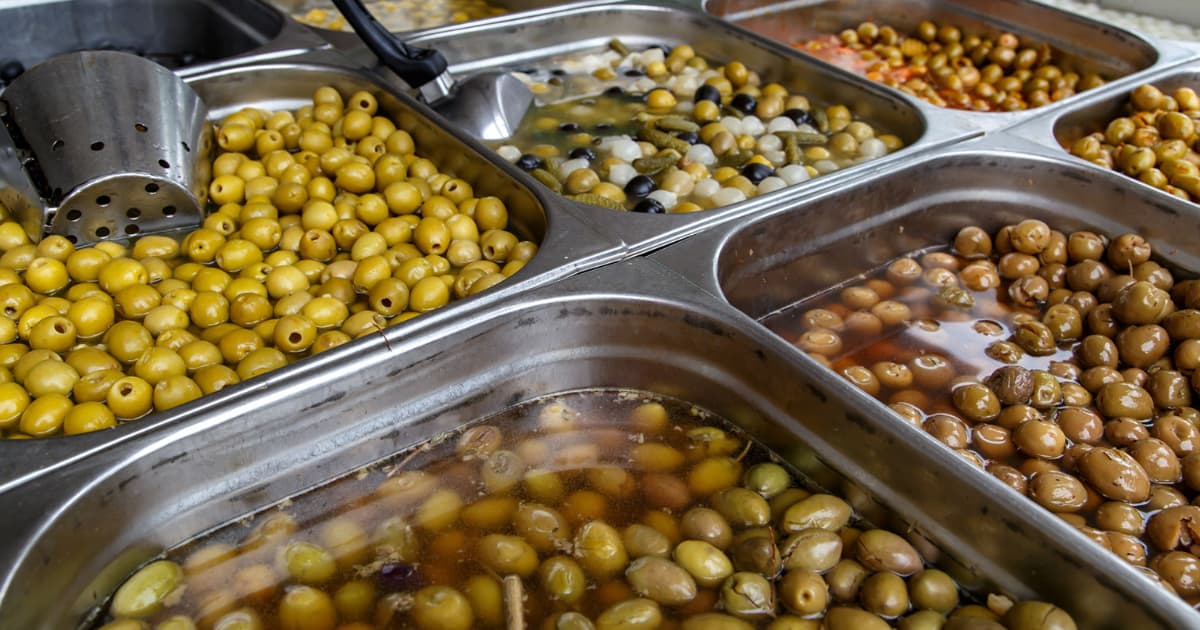
Dry-Cured Olives
Dry-curing olives involves coating them with either salt or a mixture of both, then air-drying them for several weeks or months.
During this process, salt absorbs moisture and bitterness from the olives. This produces an intense flavor and chewy wrinkled texture.
Dry-cured olives usually have more of a salty taste with subtle hints of spices used during curing. Some popular dry-cured olive varieties include
- Moroccan Beldi
- Italian Taggiasca
- Greek Throubes
Beldi olives have a unique smoky flavor with just enough bitterness.
Taggiasca olives boast an aromatic, fruity taste with a subtle almond undertone.
Throubes olives boast an earthy taste and soft yet oily texture.
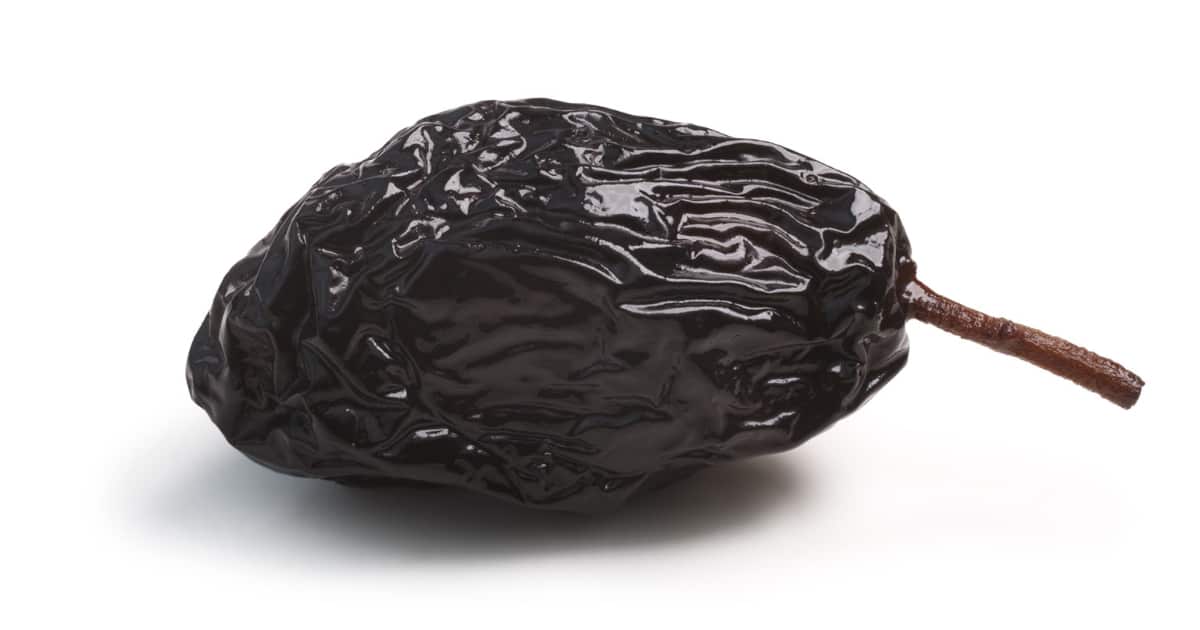
Ly-Cured Olives
Lye-curing is a method that uses an alkaline solution, typically sodium hydroxide, to eliminate bitterness from olives quickly.
After being soaked for 8-24 hours in this solution, they are washed and immersed in a mild brine.
Lye-cured olives have a more delicate taste compared to other curing methods.
Some popular lye-cured olive varieties include:
- Spanish Manzanilla
- Hojiblanca
- Sevillano
Manzanilla olives have a mild, nutty flavor with an irresistibly tender texture - ideal for stuffing.
Hojiblanca olives have a firm texture with complex flavor profiles, including fruitiness, bitterness, and a hint of spice.
Californian Sevillano olives offer buttery goodness with a crisp texture perfect for snacking or garnishing cocktails.
Stuffed Olives
Stuffed olives are an exciting and flavorful snack or appetizer that blends olives' distinct textures and flavors with other complementary ingredients.
Not only does stuffing enhance the taste, but it also adds an element of surprise and intrigue to the dining experience.
Stuffed olives provide endless culinary exploration opportunities, from classic fillings to creative combinations.
Common Ingredients in Stuffing
Classic ingredients for stuffing olives include pimientos, garlic, almonds, blue cheese, and anchovies.
Pimientos are sweet red peppers that vibrantly contrast olives' salty and tart taste.
Garlic adds an aromatic kick, while almonds provide a satisfying crunch.
Blue cheese and anchovies bring bold umami-rich flavors that complement olives' brininess.
Popular Stuffed Olive Varieties
Popular stuffed olive varieties include:
- Spanish Manzanilla olives stuffed with pimientos
- Greek Kalamata olives filled with garlic or blue cheese
- Italian Cerignola olives packed with almonds or anchovies.
These tasty morsels can be enjoyed as part of tapas or antipasti platters and in salads, sandwiches, and pasta dishes.
Creative Stuffing Ideas
For a creative spin on traditional stuffed olives, try experimenting with sun-dried tomatoes, jalapenos, citrus zest, or chocolate.
Sun-dried tomatoes provide sweetness, while jalapenos add spice.
Citrus zest imparts a refreshing taste, while chocolate provides an unexpected yet delightful sweet contrast to the savory olive.
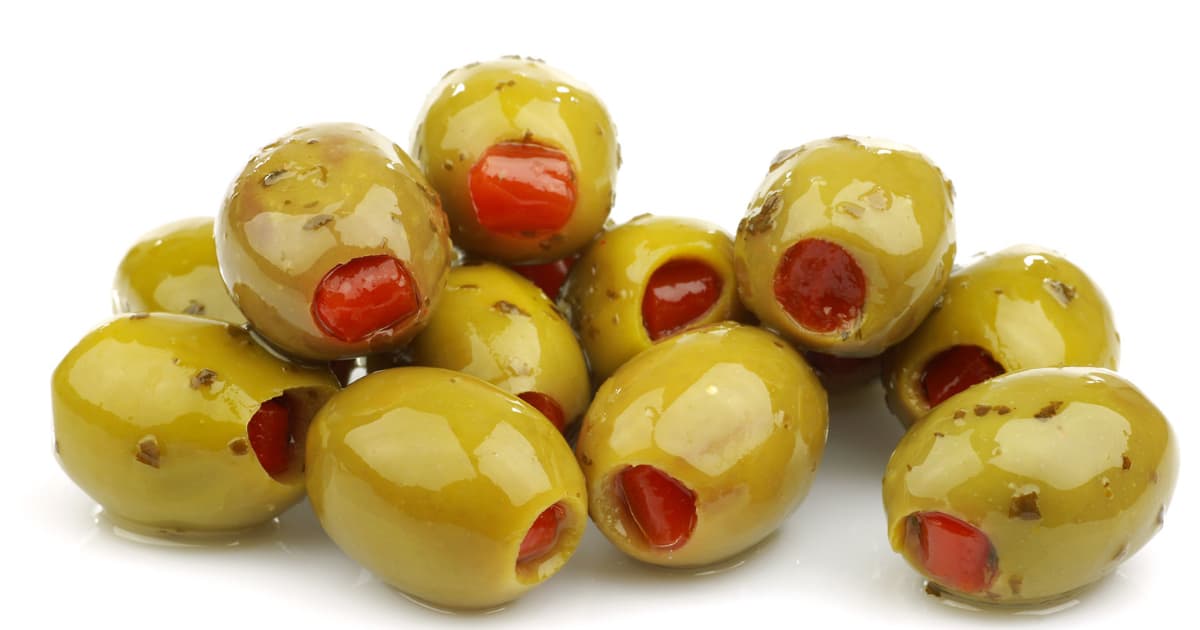
Olives in the Culinary World
Olives are an integral element in many traditional dishes from around the world.
Greek salad and moussaka feature olives, while Spanish tapenade emphasizes their flavorful spread.
Italian cuisine includes puttanesca sauce and various antipasti platters.
Moroccan tagines often incorporate olives for their rich, complex taste and tender texture.
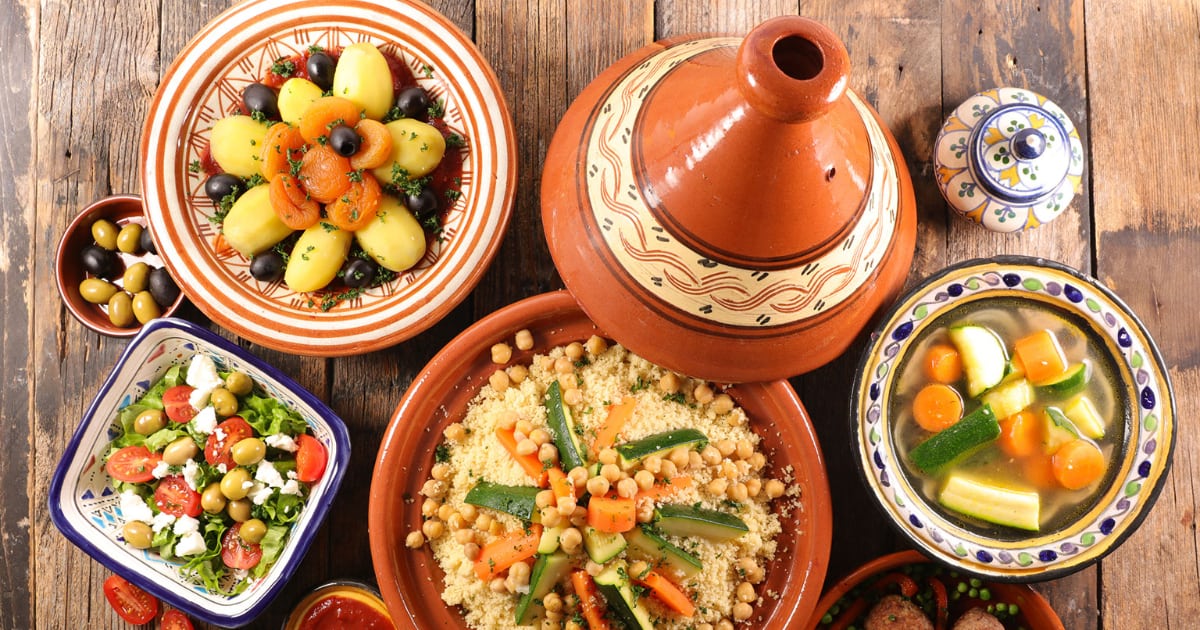
Cooking with Olives: Tips and Techniques
When cooking with olives, it's essential to be mindful of their saltiness which may vary depending on how they have been cured.
Be aware of the salt content in your dish and adjust seasonings.
Olives can be used whole, sliced, or chopped. They should always be added toward the end to for preserving their flavor and texture during preparation.
Pairing Olives with Other Ingredients
Olives go well with a variety of ingredients, such as:
- Cured meats
- Aged cheeses
- Crusty bread and bold wines
They also complement fresh vegetables like tomatoes, cucumbers, bell peppers and grains like couscous or rice.
When selecting wine pairings for olives, consider robust reds or crisp whites that match their intense flavors.
FAQs
Q: What is the difference between green and black olives?
A: The primary distinction between green and black olives is their ripeness.
Green olives are harvested before they reach full maturity, while black olives are picked when fully mature.
As such, green olives tend to have a firmer texture and more bitter, tangy flavor than black olives' richer, mellow taste.
Q: Can I consume olives straight from the tree?
A: Olives picked straight from the tree are typically not palatable due to their high levels of bitterness caused by oleuropein, a naturally occurring compound found in olives.
To make olives edible and enjoyable, they undergo curing processes like brine-curing, dry-curing, or lye-curing, which helps remove bitterness and develop unique flavors and textures.
Q: How are olives cured and preserved?
A: Olives are cured and preserved using one of three primary methods: brine-curing, dry-curing, or lye-curing.
Brine curing involves soaking olives in a saltwater solution which draws out bitterness and encourages fermentation - giving the fruit its characteristic tart flavor.
Dry curing involves coating olives with either salt or an alkaline solution before air-drying for a concentrated flavor and chewy texture.
Lye curing uses strong alkalis to eliminate bitterness for milder tastes and smoother textures.
After being cured, these olives may be stored in brine, oil, or vinegar to extend their shelf life further.
Q: Are all olives suitable for making olive oil?
A: Olives contain oil, but certain varieties are ideal for olive oil production due to their higher oil content and appealing flavor profiles.
Famous olives used in oil production include:
- Arbequina
- Picual
- Koroneiki
Some olives, such as Kalamata or Cerignola, tend to be consumed rawer due to their distinctive taste and texture.
Q: What is the shelf life of olives?
A: Olives' shelf life depends on several factors, including their curing method, storage conditions, and whether they have been opened or remain sealed in their original packaging.
Unopened containers of olives stored at room temperature can last up to two years. Once opened, they should be kept in brine or oil solutions and refrigerated, keeping them fresh for several months.
Before consumption, always inspect for spoilage signs, such as off odors, mold, or discoloration.
Conclusion
Olives offer an unparalleled world of flavors, textures, and culinary uses, making them a beloved ingredient in cuisines around the globe.
There's an olive type for every palate, from green to black and mixed-color olives, as well as brine-cured, dry-cured, and lye-cured varieties.
Stuffed olives offer an exciting twist on classic offerings with creative fillings providing a unique experience.
Olives are an integral component of traditional dishes from different cultures, and their versatility makes them popular in casual and gourmet cooking.
As you discover many types of olives available, remember to appreciate their distinctive characteristics and the endless culinary opportunities they provide.

